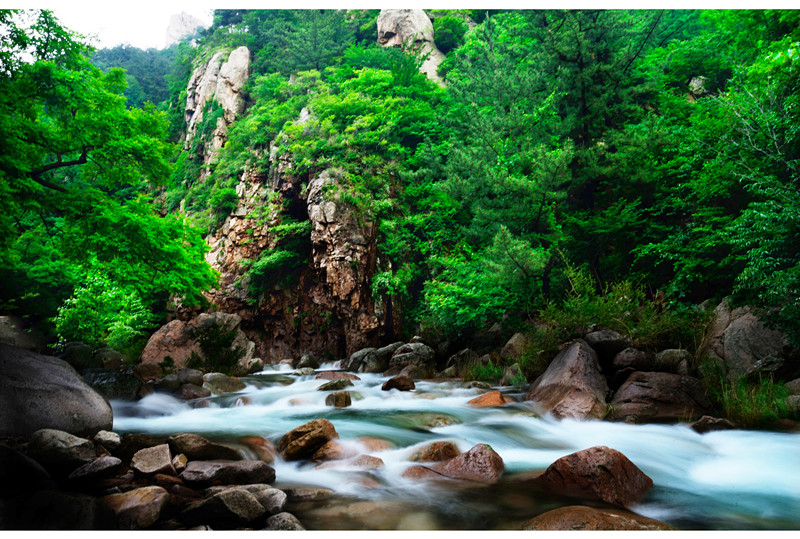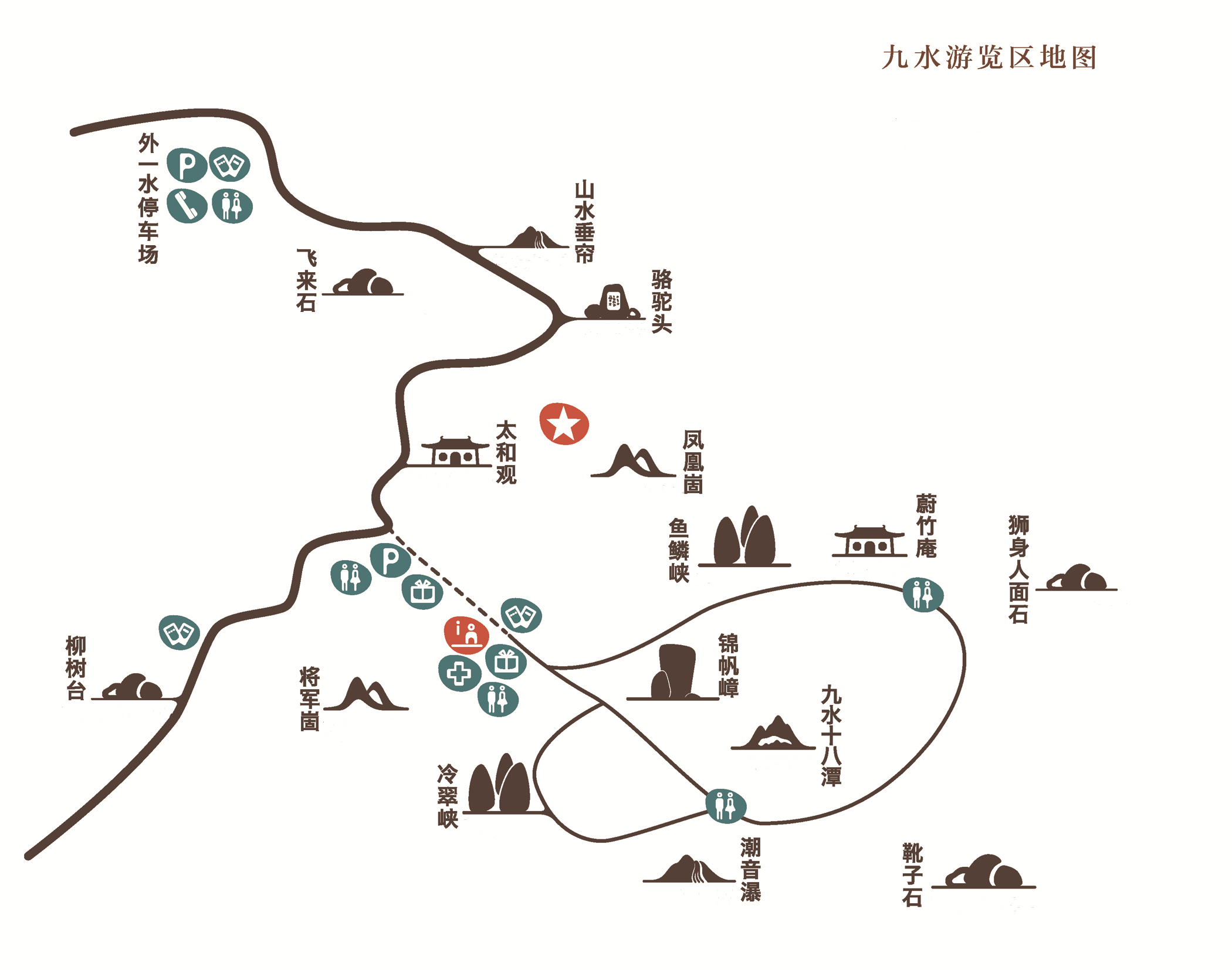


This tour rout is themed abandoning oneself to nature and seeking the wisdom of life.
Jiushui originates from the Tianyi Spring north of the Jufeng Peak at a hight of 1,100 meters, making it the highest spring in Laoshan Mountain. Jiushui is also the upper reach of the mother river of the Laoshan District, the Baisha River. The area has 42,000 negative oxygen ions per cubic centimeter, 20 times the highest national standard, which is worthy of the name of "Natural Oxygen Bar". Jiushui is famous at home and abroad for its beautiful natural gallery. "Five steps, a change of scenery; ten steps, a change of sky". The picturesque rocks everywhere are vivid and lifelike. The clear water turns a thousand times, the spoondrift flies like snow, the lake is clear as jade, and the changes are endless. Walking into this natural gallery, tourists naturally become "people in the picture".
Main attractions
Tidal Sound Falls
Tidal Sound Falls originates from the Tianyi Spring north of Jufeng Peak atop Laoshan Mountain. Tidal Sound Falls crushes down from the sky with twists and turns. The sound of the waterfall falling is like the surging tide, thus the waterfall is known as the “tidal sound waterfall". In dry season, the waterfall appears gentle and graceful; while in wet season, it is surging, imposing and sounds like a rolling tide of anger.
Weizhu (Luxuriant Bamboo) Taoist Temple
Originally named "Weizhu Temple", it was renamed "Weizhu Taoist Temple" in 2006. This scenic spot is elegant and is known as "a place with luxuriant bamboo and singing spring". Weizhu Temple was built in the 17th year of Wanli in Ming Dynasty (1589). At that time, Song Chongru, a Taoist priest of Quanzhen Huashan Sect, came here and saw the green hills and singing rivers, a place that is quiet and elegant, a place that is ideal for studying Taoism. So he bore the hardships and built a the Taoist temple here. The whole temple covers an area of 2.6 mu, with a construction area of more than 150 square meters. It is divided into two courts, three main halls and more than ten houses. When first built, the temple was called Sanyuan Temple. The main hall is dedicated to Zhenwu Emperor, Guanyin and Three Great Emperor-Officials. The Weizhu Taoist Temple today is rebuilt as it was. There are rare flowers and trees such as white lilac, Japanese red pine and camellia planted in the courtyard.
Sightseeing route

Route: Guanlao Parking Lot - Wooden Plank Roads - Neisanshui (Inner Three Waters) - Wuji Lake - Lengcui Gorge - Seven Waters Curtain - Guanpu Pavilion - Tidal Sound Falls - Weizhu Taoist Temple. Main scenic spots: "nine waters and eighteen lakes" and various picturesque stones along this route.
In terms of tour plan, if not physically fit, tourist can choose to backtrack after visiting Tidal Sound Falls, taking the route from Neisanshui to Tidal Sound Falls. The round trip time is about one and a half hours; If physically strong, tourist can choose to take the circular line, which takes about two and a half hours.



